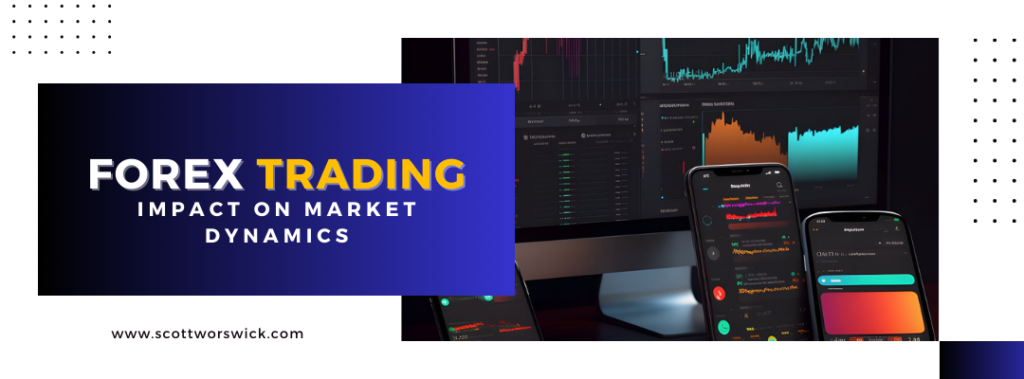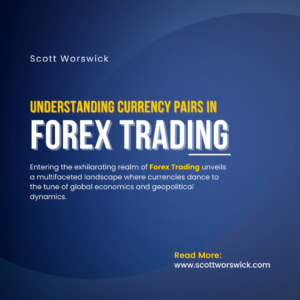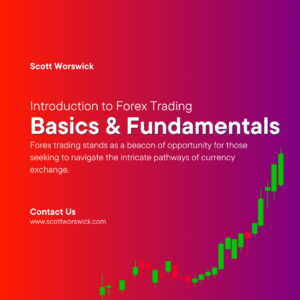In the dynamic realm of financial markets, the convergence of artificial intelligence and machine learning is revolutionizing the landscape of forex trading. These technological advancements are ushering in a new era of sophistication and efficiency, reshaping the future of trading as we know it. With algorithms and automated trading systems at the forefront, forex traders are experiencing a paradigm shift in market dynamics, driven by data-driven decision-making and predictive analytics.
As the forex trading community embraces these cutting-edge technologies, algorithms are emerging as indispensable tools for navigating the complexities of the global currency market. Leveraging AI and machine learning algorithms, traders can analyze vast amounts of market data in real-time, uncovering patterns and trends that were previously beyond human comprehension. This newfound capability empowers traders to make informed decisions with unparalleled accuracy, enabling them to capitalize on opportunities and mitigate risks in a fast-paced and ever-evolving market environment.
Furthermore, the prevalence of automated trading systems powered by AI and machine learning is reshaping the forex trading landscape. These sophisticated systems execute trades autonomously based on predefined parameters, allowing traders to leverage market opportunities around the clock. By streamlining trade execution and eliminating human bias, automated trading systems enhance market liquidity and efficiency, ultimately driving greater transparency and accessibility for traders worldwide. In essence, the fusion of AI and machine learning with forex trading is propelling the industry towards a future defined by innovation, efficiency, and limitless possibilities.
Table of Contents
1. Sophisticated Algorithms of AI for Forex Trading
In the fast-paced world of financial markets, sophisticated algorithms powered by artificial intelligence and machine learning are revolutionizing the landscape of trading. These advanced algorithms play a pivotal role in shaping the future of forex trading, enabling traders to navigate complex market conditions with precision and agility. By leveraging vast amounts of historical and real-time data, algorithms can identify patterns, trends, and correlations that human traders may overlook, providing invaluable insights into market dynamics.
These cutting-edge algorithms empower forex traders to make data-driven decisions with confidence and accuracy. By analyzing market sentiment, economic indicators, and geopolitical events, algorithms can anticipate market movements and identify profitable trading opportunities in real-time. This predictive capability allows traders to stay ahead of the curve and capitalize on emerging trends, ultimately enhancing their performance and profitability in the forex market.
Furthermore, the sophistication of algorithms in forex trading extends beyond mere analysis to include automated execution of trades. Through algorithmic trading strategies, traders can automate the execution of buy and sell orders based on predefined criteria and parameters. This automation streamlines the trading process, enabling traders to react swiftly to market fluctuations and capitalize on opportunities without delay. As a result, algorithmic trading systems are becoming increasingly prevalent in the forex market, driving greater efficiency and liquidity while reducing transaction costs.
Moreover, the evolution of sophisticated algorithms in forex trading is not only reshaping market dynamics but also democratizing access to the market. With the proliferation of algorithmic trading platforms and tools, traders of all levels of experience and expertise can harness the power of AI and machine learning to enhance their trading strategies. This democratization of trading technology is leveling the playing field, empowering individual traders to compete with institutional players and participate in the forex market on equal footing. In essence, the rise of sophisticated algorithms is ushering in a new era of innovation, efficiency, and opportunity in the world of forex trading.
2. Prevalence of Automated Trading Systems
In the ever-evolving landscape of forex trading, the prevalence of automated trading systems represents a pivotal shift towards efficiency and innovation. Powered by advancements in artificial intelligence and machine learning, these systems are rapidly gaining traction among traders seeking to capitalize on the dynamic nature of the forex market. Automated trading systems, also known as algorithmic trading or algo-trading, execute trades autonomously based on predefined criteria and parameters, freeing traders from the constraints of manual execution and allowing for swift responses to market developments.
The increasing prevalence of automated trading systems in the forex market is transforming the way traders approach their strategies and execute trades. By leveraging AI and machine learning algorithms, these systems can analyze vast amounts of market data with unparalleled speed and accuracy, identifying trading opportunities and executing trades in real-time. This automated approach not only minimizes human error but also enables traders to capitalize on fleeting market opportunities that may arise outside of regular trading hours, thereby maximizing profit potential and optimizing trading performance.
Moreover, the widespread adoption of automated trading systems is reshaping market dynamics by enhancing liquidity and efficiency. These systems can execute trades with lightning speed, resulting in tighter bid-ask spreads and reduced transaction costs for traders. Additionally, the 24/7 nature of automated trading ensures continuous market participation, contributing to a more liquid and dynamic forex market. As a result, traders benefit from improved price discovery and increased market transparency, fostering a more competitive and accessible trading environment for participants.
Furthermore, the prevalence of automated trading systems is democratizing access to the forex market, empowering traders of all backgrounds and experience levels to participate in forex trading. With the availability of user-friendly trading platforms and algorithms, individual traders can harness the power of AI and machine learning to develop sophisticated trading strategies and compete on a level playing field with institutional investors. This democratization of trading technology is driving greater inclusivity and diversity in the forex market, paving the way for a more vibrant and dynamic trading ecosystem.
3. Impact on Market Dynamics

The advent of advancements in artificial intelligence and machine learning is undeniably reshaping the dynamics of the forex trading landscape. These technologies are injecting a new level of efficiency, transparency, and liquidity into the market, fundamentally altering the way participants engage with and perceive forex trading. With algorithms and automated trading systems leading the charge, market dynamics are evolving to accommodate the rapid pace of technological innovation, creating new opportunities and challenges for traders and investors alike.
At the heart of this transformation lies the unprecedented sophistication of algorithms and automated trading systems in forex trading. By leveraging AI and machine learning, these systems can analyze vast quantities of market data in real-time, enabling traders to make informed decisions with greater precision and speed. As a result, market dynamics are becoming more fluid and responsive, with trends and patterns being identified and acted upon instantaneously. This heightened level of market efficiency is driving increased liquidity and tighter spreads, ultimately benefiting traders by reducing transaction costs and enhancing price discovery.
Furthermore, the impact of advancements in AI and machine learning on market dynamics extends beyond mere efficiency to encompass broader shifts in market structure and behavior. With algorithms and automated trading systems playing an increasingly prominent role in forex trading, market participants are experiencing a paradigm shift towards greater automation and data-driven decision-making. This shift is fostering a more competitive and dynamic trading environment, where traders must adapt to evolving market conditions and technological innovations to remain competitive. In essence, the impact of AI and machine learning on market dynamics is catalyzing a transformational journey towards a more efficient, transparent, and accessible forex trading ecosystem.
4. Enhanced Risk Management
In the dynamic world of forex trading, advancements in artificial intelligence and machine learning are revolutionizing risk management practices. These technologies are empowering traders with sophisticated tools and strategies to navigate the complexities of the forex market with greater confidence and precision. By leveraging AI-driven algorithms and automated trading systems, traders can proactively identify and mitigate risks in real-time, thereby safeguarding their investments and maximizing returns in an increasingly volatile market environment.
One of the key benefits of enhanced risk management in forex trading is the ability to assess and manage risk with unparalleled accuracy and efficiency. AI-driven algorithms can analyze vast amounts of market data, including price movements, economic indicators, and geopolitical events, to identify potential risks and opportunities. By leveraging predictive analytics and machine learning models, traders can anticipate market trends and fluctuations, enabling them to adjust their trading strategies and positions accordingly to minimize losses and capitalize on profitable opportunities.
Moreover, the adoption of AI and machine learning in risk management is revolutionizing the way traders approach portfolio diversification and asset allocation. By utilizing sophisticated risk models and optimization techniques, traders can optimize their portfolios to achieve a balance between risk and return. Additionally, automated trading systems can dynamically adjust portfolio allocations based on market conditions and risk preferences, ensuring optimal risk-adjusted returns over time. This proactive approach to portfolio management empowers traders to navigate changing market dynamics with agility and resilience, mitigating the impact of unforeseen events and market fluctuations.
Furthermore, the integration of AI and machine learning in risk management is fostering a culture of continuous improvement and innovation in the forex trading community. By leveraging historical data and performance metrics, traders can evaluate the effectiveness of their risk management strategies and identify areas for improvement. Additionally, machine learning algorithms can adapt and evolve over time, learning from past experiences and refining risk management techniques to adapt to evolving market conditions. In essence, enhanced risk management powered by AI and machine learning is revolutionizing the way traders approach forex trading, enabling them to achieve greater resilience, profitability, and success in an increasingly complex and dynamic market landscape.
5. Future Opportunities and Challenges
As advancements in artificial intelligence and machine learning continue to reshape the landscape of forex trading, a myriad of future opportunities and challenges lie ahead for traders and investors alike. On one hand, the proliferation of sophisticated algorithms and automated trading systems presents unprecedented opportunities for traders to capitalize on market inefficiencies and generate alpha. By harnessing the power of AI-driven analytics and predictive modeling, traders can unlock new sources of alpha and achieve superior risk-adjusted returns in an increasingly competitive market environment.
However, along with these opportunities come a host of challenges that must be navigated with care and diligence. One of the primary challenges facing forex traders in the era of AI and machine learning is the risk of algorithmic manipulation and market abuse. As automated trading systems become more prevalent, there is a growing concern that malicious actors may exploit vulnerabilities in algorithmic trading strategies to manipulate prices and disrupt market integrity. Consequently, regulators and market participants must work collaboratively to develop robust safeguards and oversight mechanisms to ensure the integrity and stability of the forex market.
Furthermore, the rapid pace of technological innovation in forex trading poses challenges related to skill development and education. As algorithms and automated trading systems become more sophisticated, traders must continually update their skill sets and adapt to evolving market dynamics to remain competitive. Additionally, there is a growing need for comprehensive training programs and educational resources to empower traders with the knowledge and expertise needed to leverage AI and machine learning effectively in their trading strategies.
Despite these challenges, the future of forex trading is brimming with promise and potential. As advancements in AI and machine learning continue to push the boundaries of what is possible, traders can expect to see further innovations in algorithmic trading strategies, predictive analytics, and risk management techniques. Moreover, the democratization of trading technology and the increasing accessibility of AI-driven tools and platforms are leveling the playing field, empowering traders of all backgrounds and experience levels to participate in the forex market and unlock new opportunities for growth and success. In essence, the future of forex trading is defined by a delicate balance between innovation and regulation, presenting both opportunities and challenges that must be embraced with vigilance and foresight.
Conclusion
In conclusion, the transformative impact of advancements in artificial intelligence and machine learning on the future of forex trading cannot be overstated. As algorithms and automated trading systems continue to evolve in sophistication and prevalence, they are fundamentally reshaping market dynamics and revolutionizing the way traders approach the forex market. From predictive analytics to automated execution, these technologies are empowering traders with unprecedented levels of insight, efficiency, and agility, enabling them to navigate the complexities of the forex market with confidence and precision.
Looking ahead, the future of forex trading holds immense promise and potential, fueled by the ongoing advancements in AI and machine learning. As traders embrace these technologies and adapt to the evolving market landscape, they can expect to unlock new opportunities for growth and success. Moreover, the democratization of trading technology and the increasing accessibility of AI-driven tools and platforms are democratizing access to the forex market, empowering traders of all backgrounds and experience levels to participate in and prosper from the global currency market.
In essence, the future of forex trading is defined by innovation, opportunity, and resilience. By harnessing the power of AI and machine learning, traders can stay ahead of the curve, capitalize on emerging trends, and navigate market fluctuations with agility and confidence. However, as with any technological advancement, there are challenges to be addressed, including concerns around algorithmic manipulation and the need for ongoing education and skill development. Nonetheless, with the right strategies and mindset, traders can leverage the transformative potential of AI and machine learning to thrive in the ever-evolving world of forex trading.






Pingback: Top 10 Advantages of Forex Trading in the Modern Era -